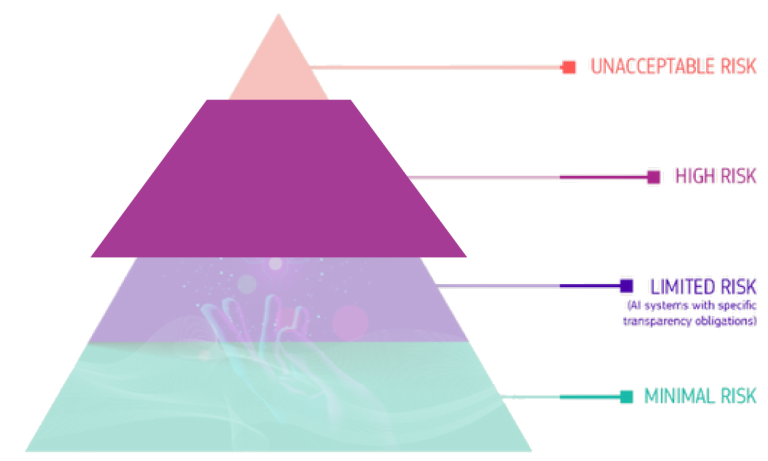The role of AI in pensions: The AI Regulation

Chris Vinke, CEO & founder GRN Consultancy

Karima Chraa, Senior analist
In our first blog, you can read that determining the right risk class is important to determine follow-up actions for currently deployed AI solutions. Digital Government has already published the first blog on this subject explaining how this European AI regulation is put into effect. This regulation is a law that sets requirements for the development and use of artificial intelligence (AI) within the European Union (EU). The law will come into force in early August 2024. Therefore, it is important to understand what your organization is facing and how best to prepare for this coming into force.
The purpose of the AI Regulation
The AI regulation will apply to both public and private parties. It sets out the rights and obligations of developers and users of AI systems in the EU. These rules ensure that reliable AI is developed and that its use is in line with European public values and fundamental rights. By doing so, the EU wants to strengthen citizens' trust in AI, making room for innovation and economic development. To ensure this, the AI regulation takes a risk-based approach. Different rules apply per risk category.
Changes for organizations
From the effective date of this new law, Aug. 1, 2024, the AI regulation will go into effect in stages, with most obligations taking effect within six months and no later than three years. Also, in six years, the obligations will apply retroactively to government organizations. As a result, the changes are not taking place all at once. This gives organizations time to prepare for the obligations.
Prohibited AI Practices
The first category of AI systems covered by the new law are prohibited AI systems. These are AI systems that violate European fundamental standards and values. The risks posed by these systems are unacceptable, which is why these provisions are in effect six months after they come into force. Examples of prohibited practices include: AI systems that manipulate human behavior in a negative way and AI systems used for unfair assessment of natural persons (so-called “social scoring”).

Other information and more timelines check out soon:
https://www.digitaleoverheid.nl/achtergrondartikelen/wat-betekent-de-ai-verordening-voor-jouw-organisatie/
High Risk
Another category under the AI regulation is high-risk AI. These are systems that can offer great opportunities and added value, but also carry significant risks that must be eliminated. For example, in systems that filter and analyze job applications or systems that support government agencies in processing applications for asylum or residence permits. These systems must be compliant two years after enactment (Aug. 1, 2026). For high-risk AI systems in products covered by certain EU legislation (e.g., elevators), you have until Aug. 1, 2027, to comply. You have even longer time for AI systems that have already been put into operation before coming into force. For these systems, the requirements must be met six years after entry into force (2030).

Specifically, for your organization, the first step is to take an inventory on the AI systems used within the prohibited practices category. If this is the case, they must be phased out before the bans come into effect. Next, inventory whether the AI systems used are high-risk and what requirements will apply to them.
Impact on the Pension Industry
It is essential for business analysts, product managers and product owners within the retirement industry to be aware of this new legislation. The AI regulation will not only change the way AI systems are developed and deployed, but also increase the need for upskilling and digital transformation within organizations. Greater awareness will be needed within pension providers about the opportunities and risks of AI, as well as a strong focus on compliance and ethical use of technology. How best to do this? Then contact GRN for training on AI and for the quick scan, contact NWAge.